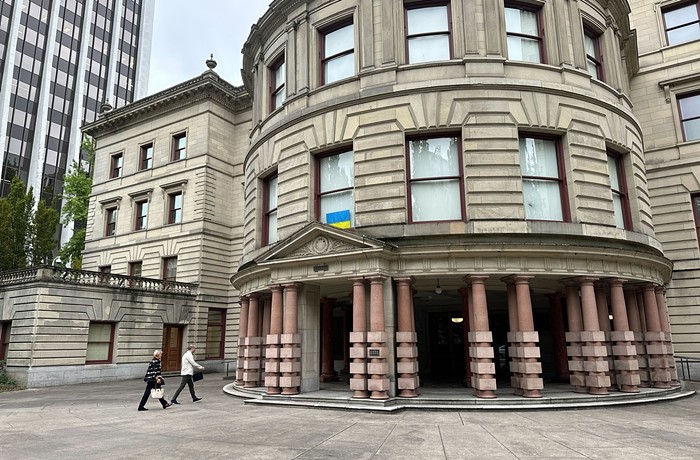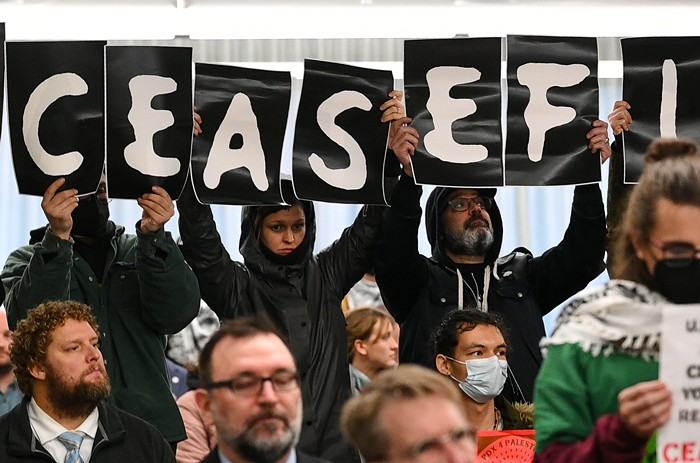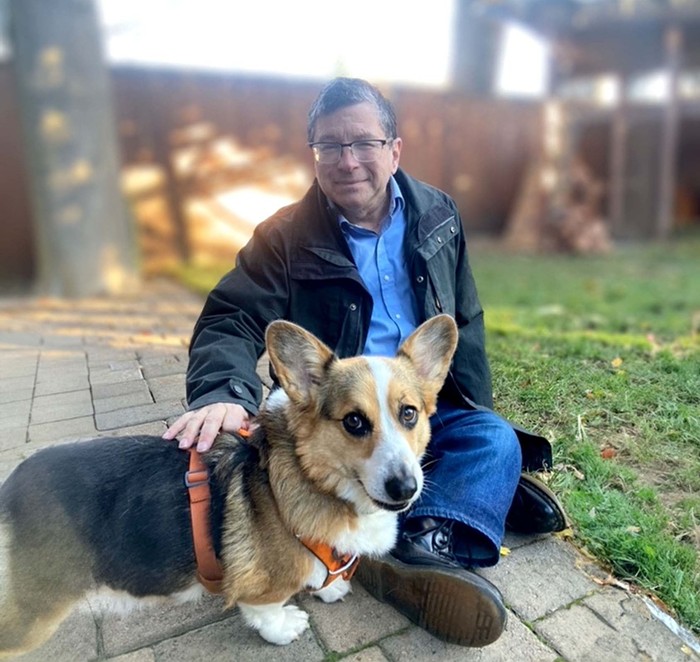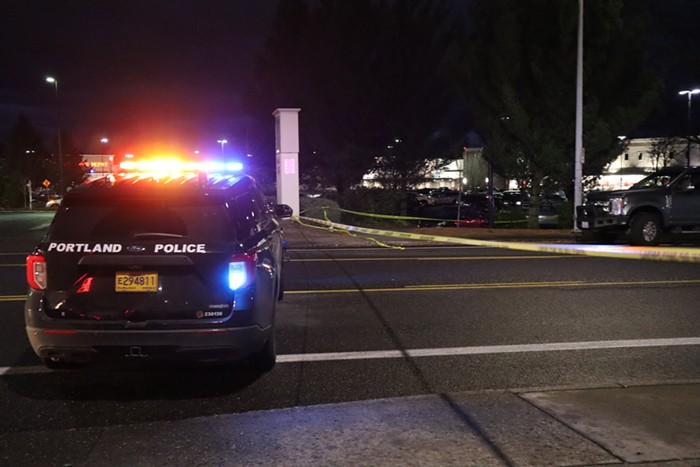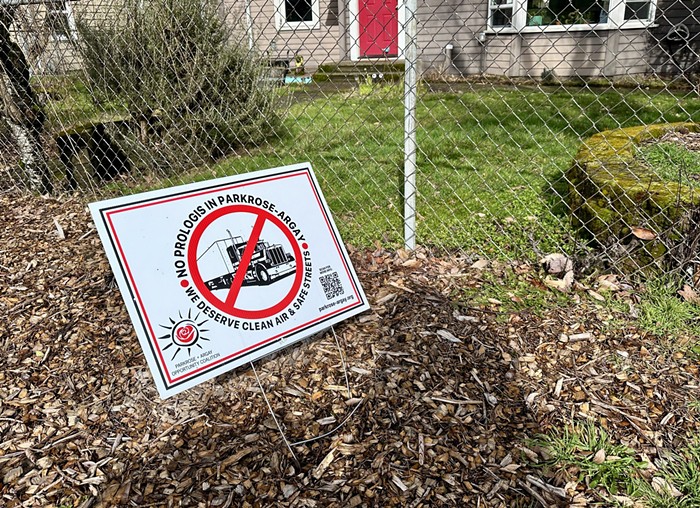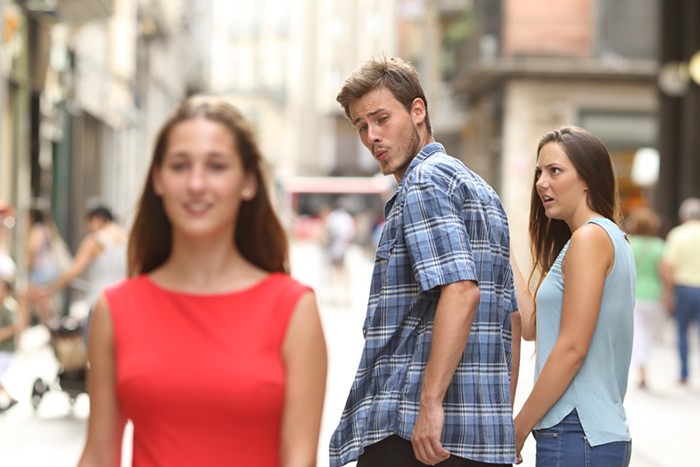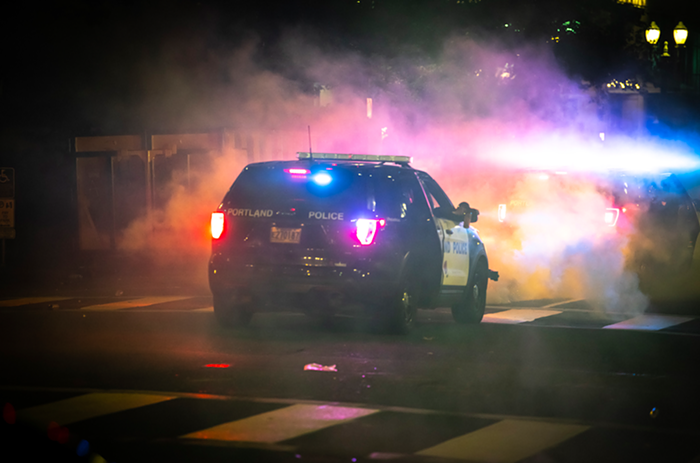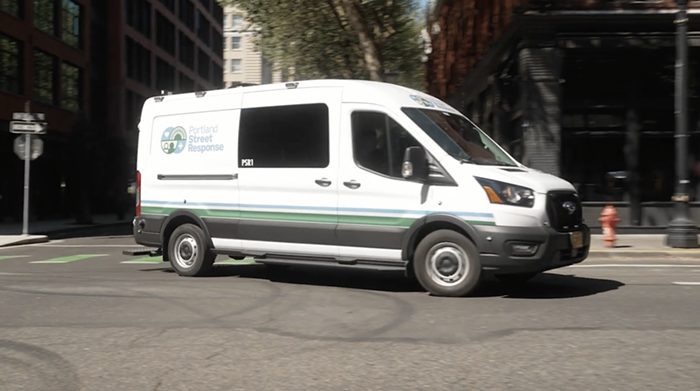
Instead of its annual fireworks show over the Waterfront Blues Festival, Portland's Fourth of July ended with billowing trash fires set by protesters and plumes of tear gas shot from federal officers dressed in military fatigues.
July 4 marked the 36th consecutive night of large protests in Portland, stemming from the death of George Floyd by Minneapolis police officers on May 25. While the weeks of protests have featured different leaders and differing protest tactics, their overarching message against police brutality has remained the same. The local police response to these actions has also remained relatively consistent, despite law enforcement leaders experimenting with different crowd dispersal tactics.
Saturday night saw an escalation in the amount of tear gas (also known as CS gas) indiscriminately used on protesters since the start of the demonstrations. This comes despite the passage of a new state law limiting when police can use tear gas and several lawsuits restricting the use of chemical weapons on non-violent protesters.
The evening began in front of the Multnomah County Justice Center—a building that serves as a county courthouse, jail, police station, and the regular gathering spot for the nightly protests. By 10 pm, a crowd of around 500 demonstrators had gathered in the joint park blocks facing the Justice Center and the Hatfield Federal Courthouse, setting off commercial-grade fireworks and snacking on free pizza served by a group of self-identified witches.
pic.twitter.com/sFGygsHr19
— Alex Zielinski (@alex_zee) July 5, 2020
After protesters set off several large fireworks directly outside the doors of the federal courthouse, federal officers fired a tear gas canister into the intersection of SW Main and 3rd. Only after this action did Portland Police Bureau (PPB) declare the protest a "riot."
That label holds new significance. On June 30, Gov. Kate Brown signed a bill into law prohibiting the use of tear gas by law enforcement officers except after a riot is declared and after officers announce their intent to use tear gas twice, allowing for enough time for people to leave the area. This law, however, does not apply to federal law enforcement officers.
According to Kevin Sonoff, a spokesperson for the US Attorney’s Office for Oregon, four federal law enforcement agencies have been responding to these protests: US Marshals, the Federal Protective Service, US Customs and Border Protection, and Homeland Security Investigations (a division of US Immigration and Customs Enforcement).
Federal officers are also not subject to the terms of a temporary restraining order, approved by a judge on June 9, limiting tear gas use on non-violent protesters in Portland. The order, requested by Portland nonprofit Don't Shoot PDX, prohibits PPB from indiscriminately using tear gas and munitions on protesters unless "the lives or safety of the public or the police are at risk.” On June 30, lawyers representing Don't Shoot PDX asked the judge overseeing this case to hold Portland in contempt of court, arguing that PPB had already broken the terms of the order. The court has yet to respond to this request.
(This isn't the only legal challenge to PPB over its response to recent protests. The ACLU of Oregon has filed a class action lawsuit against PPB officers for limiting journalists and legal observers from documenting police during protests. The Portland Mercury is one of several plaintiffs in this case).
Protesters continued to set off large fireworks Saturday evening close to the federal building, prompting federal officers to shoot more clouds of tear gas into the crowd. Not long after, PPB made a new announcement, ordering all protesters to leave a six block radius encompassing the courthouse.
"It is inadvisable to come downtown at this time," said PPB spokesperson Tina Jones in a video update posted to PPB's Twitter feed shortly after midnight.
I’m behind the police line. pic.twitter.com/Kg2j5Kccmh
— Alex Zielinski (@alex_zee) July 5, 2020
Fireworks continued to erupt on the street between police and protesters as officers marched crowds out of the off-limits area, prompting arrests. According to PPB, 13 people were arrested over the course of the evening, for charges including resisting arrest, disorderly conduct, reckless endangerment, riot, interference with a police officer, and "unlawful direct of light from a laser pointer."
Protesters eventually dispersed and regrouped along SW Broadway. By 1 am, a crowd of hundreds marched back to the parks facing the Justice Center and Hatfield Courthouse, where they were met with no visible police presence. Several demonstrators started a fire in a garbage can in the middle of SW 3rd, while another group stoked flames at the base of a statue depicting a pioneer family in Chapman Square.
After large fireworks were again set off in the entryway of the federal courthouse, officers emerged from behind the courthouse doors, shooting what seemed to be at least a dozen canisters of tear gas indiscriminately into the park and surrounding streets. Several canisters flew over people's heads as they ran away from the gas, landing on the ground in front of them and pumping chemicals into the air. Hundreds of protesters removed their masks to cough, sneeze, and wipe their eyes from the immediate effects of the gas. Many screamed in anger at the federal officers, who stood with shields and gas masks on the perimeter of the two parks after dispersing the crowd.
"You know you are violating the Geneva Convention!" yelled one person.
The Geneva Convention bars countries from using tear gas from wartime use. In the 1990s, however, the US signed onto a global Chemical Weapons Convention, where nearly 200 countries agreed that tear gas could be used by law enforcement—just not in war.
Feds shoot canisters if tear gas indiscriminately into the park. Wow. pic.twitter.com/4ZH2GLYrjM
— Alex Zielinski (@alex_zee) July 5, 2020
The layers of thick gas successfully scattered the remaining protesters. At 2:30 am, only small groups of demonstrators stood at the periphery of the parks, watching as federal officers in tan camouflage, bulletproof vests, and helmets stood blocking off the streets to the courthouse.
This night comes on the heels of public statements made by local and state officials that fall into two distinct categories.
One one hand, Mayor Ted Wheeler and PPB Chief Chuck Lovell had made pleas for protesters to stop using violence against the police, arguing that it detracts from the purpose of anti-police protests. On the other, Governor Kate Brown, Oregon House Speaker Tina Kotek, and Portland City Commissioner Jo Ann Hardesty have issued statements condemning the excessive police violence being used against non-violent protesters across Portland.
Protests are expected to continue Sunday evening.

